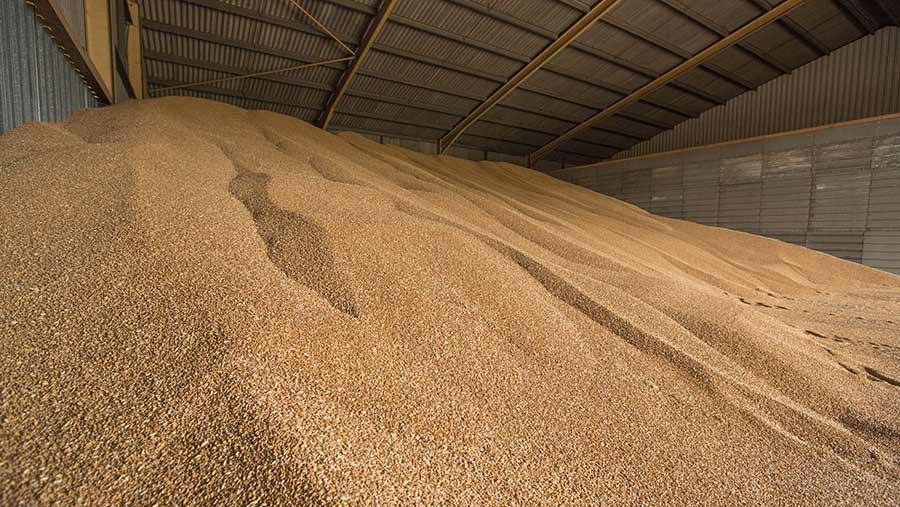UK wheat surplus keeps prices in check at £180/t ex-farm
 © Tim Scrivener
© Tim Scrivener A large UK surplus and competitive export markets are putting pressure on feed wheat prices.
Some industry figures have suggested that the UK has a 1m-tonne wheat surplus this year and with UK exports remaining relatively uncompetitive compared with other major global exporters, markets are likely to remain fairly bearish.
However, the AHDB’s early balance sheets for 2023-24 have estimated that after accounting for an increase in demand, the surplus available for either export or free stock is about 734,000t, which is significantly below last year’s levels.
See also: UK feed wheat stalls as exports struggle to gain traction
UK feed wheat futures opened at £187.8/t on 8 November for the November contract, with prices having remained relatively flat since early August. Meanwhile, May 2024 futures climbed back above £200/t this week and stood at £202/t midweek.
Supply
Crop conditions and grain supply forecasts in major exporting regions, including South America and the Black Sea, continue to influence markets.
In Argentina, the Buenos Aires grain exchange (Bolsa De Cereales) reduced the Argentinian wheat crop to 15.4m tonnes.
Russian exports remain very competitive after another bumper wheat crop, despite it being down on the previous year.
In France, plantings are slightly behind year-earlier levels, but the total 2023 cereals harvest is 5.4% higher on the year, according to FranceAgriMer.
Traders at Norfolk-based merchants Dewing Grain said winter plantings in Ukraine were 89% complete within the wheat area, which is estimated at 4.36m hectares – down 2% from last year.
Meanwhile, in the UK, traders said the wet weather has been causing issues for farmers and their crops across the country, preventing any work being done in the fields.
Market fundamentals
Zoe Andrew, grain trader at Frontier, said supply and demand remain the key market drivers, with geopolitical factors having less of an effect at the moment.
Prices have stayed within a set range during the past few months and the last significant price rally was back in July, according to Ms Andrew, with plenty of feed wheat available and ample supplies of grain globally.
She added that milling wheat premiums have been significant for a while and remain close to historic highs.
“There will be some milling wheat imported from Germany, but like the UK, they also had quality affected during harvest.”
Spot prices collected by Farmers Weekly on 8 November put milling wheat at £244.8/t, a £64/t premium over feed wheat. This gap has grown from £45/t this time last year.
Global fertiliser markets
Fertiliser manufacturers CF Industries’ global nitrogen market outlook said the prices were supported by strong demand and a tighter nitrogen supply-demand balance during the third quarter of 2023.
The company also expects demand through the end of 2023 and into 2024 to remain strong, led by India and Brazil.
CF Industries said: “In the longer term, management expects the global nitrogen supply-demand balance will remain positive, underpinned by resilient agriculture-led demand and forward energy prices that indicate a steep cost curve.”